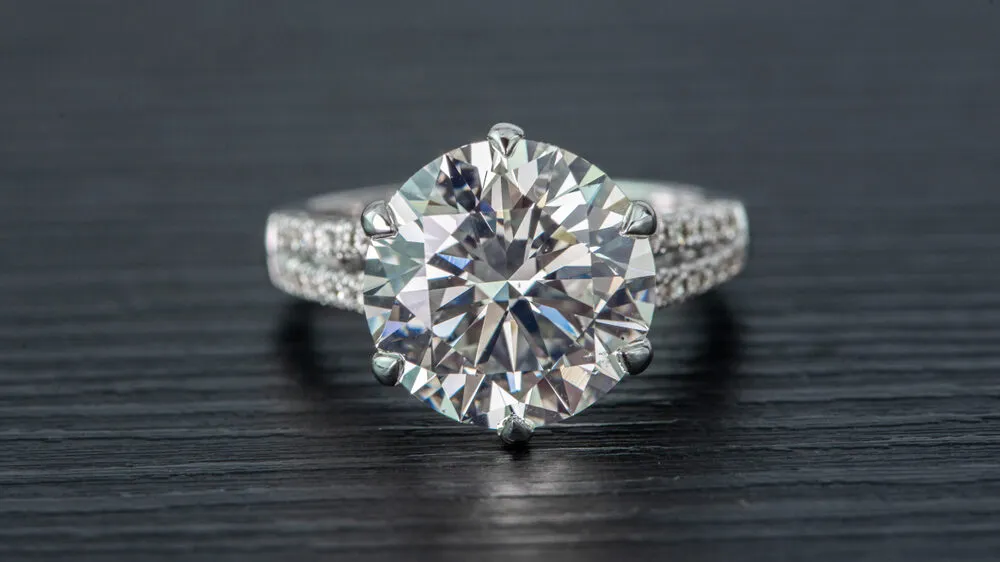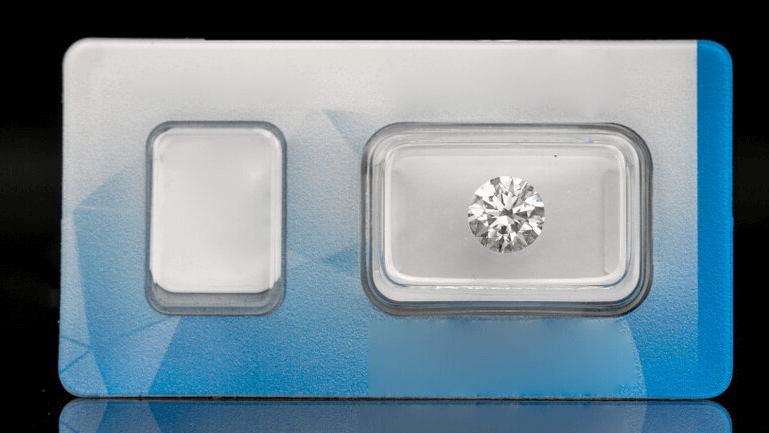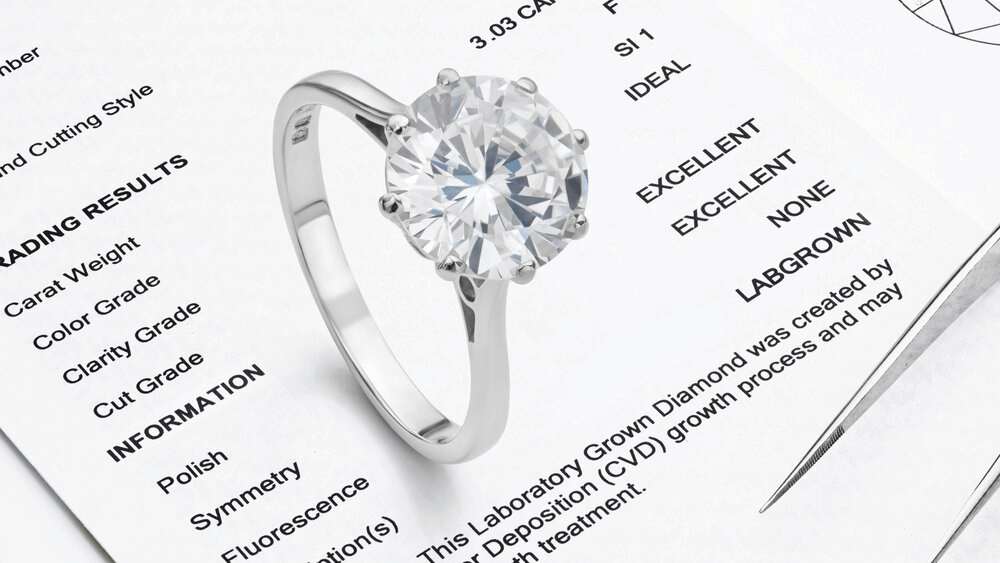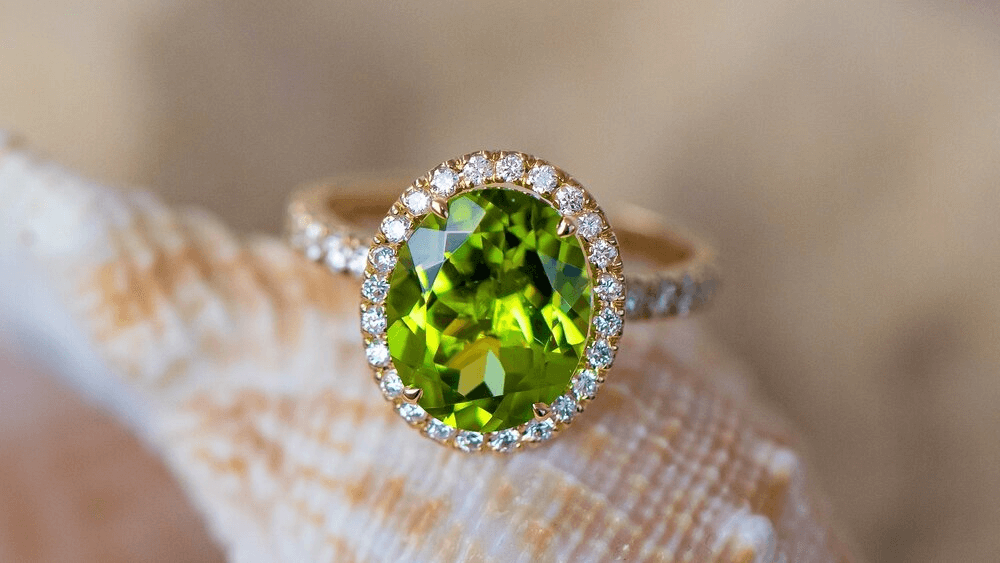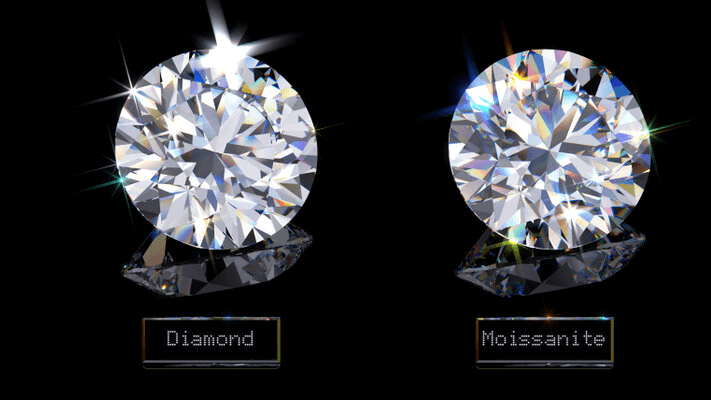Red Coral vs. Diamond: Which One’s the Real Showstopper?

By Gary A.

Edited by Olivia H.
Published Aug 13, 2024
Edited on Dec 18, 2024
Red coral is trending right now – but is it right for your engagement ring? Find out below…

Navigate this guide:
- Introduction to Coral Gemstones
- 5 Quick Tips for Buying a Coral Gemstone Engagement Ring
- What is a Coral Gemstone?
- Diamond vs. Coral: A Gemstone Comparison
- When is a Coral Gemstone the Right Choice?
- Caring for Your Red Coral Jewelry
- Our Expert Take: Sealing the Deal with a Diamond
- 7 Frequently Asked Questions About Coral Gemstone Engagement Rings
5 Quick Tips for Buying a Coral Gemstone Engagement Ring
When considering a coral gemstone for an engagement ring, it’s crucial to apply a unique set of criteria, similar to the 4Cs used for diamonds. These tips will help you make an informed decision, ensuring that your coral gemstone ring is not only beautiful but also of high quality.
Tip 1: Understand Coral Quality
- Color: The most prized coral is a deep, vibrant red, often referred to as “oxblood.” However, coral comes in a range of colors, including pink, white, and orange. The color should be uniform and saturated throughout the stone.
- Clarity: Look for coral that is free from surface blemishes, pits, or dull spots. Unlike diamonds, coral’s value doesn’t directly depend on internal clarity, but surface smoothness and lack of imperfections are crucial.
- Cut: Coral is often shaped into cabochons or used as beads rather than faceted. The craftsmanship of the cut should enhance the natural beauty and color of the coral.
Tip 2: Verify Authenticity
- Natural vs. Treated: Ensure the coral is natural and not dyed or treated to enhance color. Ask for documentation or a gemologist’s report to verify its authenticity.
- Source: Coral’s value can vary depending on its origin. Italian red coral and Japanese white coral are highly valued. Knowing the source can help assess quality and value.
Tip 3: Consider Environmental and Ethical Factors
- Coral reefs are vital to marine life but are endangered. Opt for coral that is responsibly sourced or consider vintage coral jewelry, which does not contribute to current reef depletion.
Tip 4: Metal Setting and Design
- Coral is relatively soft, so choose a protective setting that minimizes the risk of wear and tear. Bezel settings or designs that encapsulate the coral are ideal.
- Metal Compatibility: Coral pairs well with both gold and silver metals. The choice of metal can complement the coral’s color, enhancing its overall appearance.
Tip 5: Maintenance and Care
- Coral is porous and can be damaged by chemicals, including perfumes and cleaners. Understand the care requirements for coral to maintain its luster and color over time. Regular, gentle cleaning with a soft, dry cloth is recommended. Avoid ultrasonic cleaners and harsh chemicals.
Introduction to Coral Gemstones
If we asked you to make her list of the most valuable and revered gemstones in the world, we like to think we can imagine the big hitters. Diamond for sure, followed by other gemstones like sapphire, ruby, emerald, and topaz…but what about coral?
Most of us know a little about coral. We know that it’s an important organism found in salt water that grows in some pretty spectacular colors and shapes. But did you know that it might be the next big trend in the gemstone world?
Coral gemstones, with their unique organic origin and vibrant hues, have fascinated jewelry lovers for centuries. Unlike traditional gemstones that are mined from the earth, coral gems are formed from the skeletal remains of marine creatures. This gives them a distinct charm and a rich, storied past tied to the ocean’s depths. But how do they stack up against the ever-popular diamond, especially when it comes to engagements?
What is a Coral Gemstone?
Put simply, it’s a stone made from precious coral.
There are a lot of different types of coral out there, but the skeleton of the ‘precious’ or (‘red’) coral is considered to be one of the most desirable. Once the coral has died, that skeleton can be cut and polished into a gemstone.
Coral gemstones tend to be oval or circular, with no faceting. So, while a cut diamond features many of those triangular ‘faces’ that give the surface a very geometric, angular finish, a coral gemstone is much smoother – more like a pebble or piece of sea glass – the closest comparison we have to that type of shape in the diamond world is the rose cut. The faceting is not necessary, as coral doesn’t refract light or sparkle like diamond (more on that below).
Coral gemstones are also known as moonga, which is a term that originated in India. There – and, in fact, in many other parts of the world – it is believed that red coral gemstones hold certain astrological benefits, much like crystals. From emotional balance to warding-off negative energy, there are lots of reasons to wear moonga on a daily basis.
This has been the case for many thousands of years. Back in Ancient Rome, red coral was a popular choice for those looking to protect themselves and their children from danger. That distinctive color was associated with Mars, and it was believed that the coral stones derived strength from the planet.
Diamond vs. Coral: A Gemstone Comparison
While diamond is the obvious choice, you wouldn’t be the first person to wonder if a coral gemstone would work wonders in your bride’s engagement ring. Whether she loves the ocean or just adores the colors of coral, here’s what you need to know about considering a coral gemstone for an engagement ring.
Understanding Coral Gemstones
Coral gemstones really are beautiful. They come in a beautiful spectrum of colors that range from very soft, delicate, feminine pinks to deep oranges that will evoke memories of the most stunning summertime sunsets in all who look upon them. Part of this seductive appeal lies in the fact that these colors are straight from nature. They have not been engineered in a lab but formed in the raw and fascinating world that lies under the waves.
There are two key areas in which coral gemstones fall short of diamonds. Obviously, there are more differences between the two than there are similarities, but here are the most significant:
- Strength
Diamond is the hardest natural substance on earth. It’s not totally invulnerable to damage, and diamonds can break or chip in a worst case scenario, but one of the things that makes it so popular for engagement rings is the fact that they’re more likely to withstand the test of time than any other substance on earth. Coral gemstones, on the other hand, or a lot less durable. On the Mohs scale for hardness, coral ranks at 3-4. For reference, diamond is a 10, and a weaker gemstone like emerald (which many jewelers advise against for bridal jewelry) is a 7.5 to 8. - Sparkle
Yes, we love the colors that coral creates for itself, but do they really stack up against the stunning, eye-catching beauty of diamond? Remember that colors go in and out of fashion – right now, we’re all about sage green and warm beige, but back in the early 2010s we just couldn’t get enough of our more vibrant shades.
We’re not saying that one day you’ll wake up and feel bored of your coral gemstone – if you love it, you love it forever. But diamonds are the classic choice for a reason. True, we love our fancy color diamonds, but the clear, simple beauty of a white diamond can’t be beat.
and it’s not just about color, either. Diamonds sparkle in an amazing display of fire and brilliance whenever the light hits. Coral gemstones have a much more subtle Sheen. They don’t refract light like diamond does, which means they can fall a little flat if they used in bridal jeweler.
When is a Coral Gemstone the Right Choice?
There’s no denying that coral gemstones are truly beautiful, and their cultural significance – particularly in India – means that a gift of a precious coral gemstone can represent a very sentimental, beautiful thing.
But, unfortunately, there’s a catch.
As we mentioned above, coral gemstones are much, much weaker than diamond. Not just that, but they’re much weaker than many other gemstones, too – even weaker than gemstones that we recommend shoppers avoid for engagement rings. Why? Because, after a few years – or even a few months – of daily wear, you may just look down and find that the stone has cracked, chipped, or fallen out of the setting completely.
It’s just not worth the disappointment. Remember that, if it breaks, it’s not a simple case of replacing it. The center stone in an engagement ring holds a huge amount of sentimental meaning, and you can’t just switch that out whenever a little damage starts to show.
Coral gemstones are perfect for fine jewelry that is only going to be worn every now and then. What they’re totally wrong for is any item of jewelry that is supposed to last many, many years of near-constant wear. Don’t take the risk, because the chances are you will be disappointed.
Caring for Your Red Coral Jewelry
Even if you make the (wise) decision not to use red coral for your engagement ring, that’s no reason not to get your partner a gift of coral jewelry. Earrings and necklaces are a great bet since they are less likely to sustain as many knocks and scrapes as a ring.
Caring for red coral jewelry is easy, and very similar to caring for any other piece of fine jewelry.
Regular Cleaning Rituals
Find a mild, unscented dish soap, and add a small squeeze of it to a bowl of warm water. Make sure it’s cool enough for you to stick your finger in – if not, it’s too hot!
Let it soak for a few minutes, then let it dry on a towel – try not to rub it, or the fibers may snag on the prongs.
Professional Care
If you’re worried the grime is still building up in the little nooks and crannies, visit a jeweler. They have more advanced cleaning tools and can help you spruce up your favorite pieces.
Our Expert Take: Sealing the Deal with a Diamond
The key takeaway? Coral isn’t right for an engagement ring, or any piece of jewelry that you want to guarantee will last the test of time. It’s a beautiful gemstone with a lot of history and cultural meaning behind it, but it’s just not right for this sort of fine jewelry piece – no matter how much you love it.
Don’t give up on coral entirely, though – it’s still a great choice for a special piece of jewelry.
7 Frequently Asked Questions About Coral Gemstone Engagement Rings
- Q: What makes coral gemstones special for engagement rings?
- A: Coral gemstones are unique due to their organic origin, vibrant colors, and historical significance. They offer a distinctive, natural beauty different from traditional gemstones, making them a special choice for those looking for a meaningful and unique engagement ring.
- Q: Can coral gemstones be used in daily-worn engagement rings?
- A: Yes, coral gemstones can be used in daily-worn engagement rings, but they require careful handling and maintenance due to their softer nature compared to other gemstones. Choosing a protective setting and regular care will help preserve the coral’s beauty.
- Q: How do I care for my coral engagement ring?
- A: To care for your coral engagement ring, gently clean it with a soft, dry cloth. Avoid exposure to chemicals, extreme temperatures, and direct sunlight. Store it separately to prevent scratches.
- Q: Are coral gemstones available in different colors?
- A: Yes, coral gemstones come in various colors, including red, pink, white, and orange. The most valuable and sought-after color is a deep, vibrant red known as “oxblood.”
- Q: How can I ensure the coral in my engagement ring is ethically sourced?
- A: Look for sellers who provide documentation or certifications indicating the coral’s ethical sourcing. Alternatively, consider purchasing vintage coral jewelry, which does not contribute to current environmental depletion.
- Q: Can the color of coral gemstones fade over time?
- A: Yes, the color of coral gemstones can fade over time if exposed to excessive sunlight or harsh chemicals. It’s important to follow proper care guidelines to maintain the color and quality of the coral.
- Q: Is coral a durable choice for an engagement ring?
- A: Coral has a softer composition compared to many gemstones, making it less durable. However, with careful handling, a protective setting, and proper maintenance, a coral engagement ring can last and be cherished for many years.
Find the diamond ring of your dreams with Jeweler AI—where your perfect match awaits.
FOLLOW-UP GUIDE SERIES

